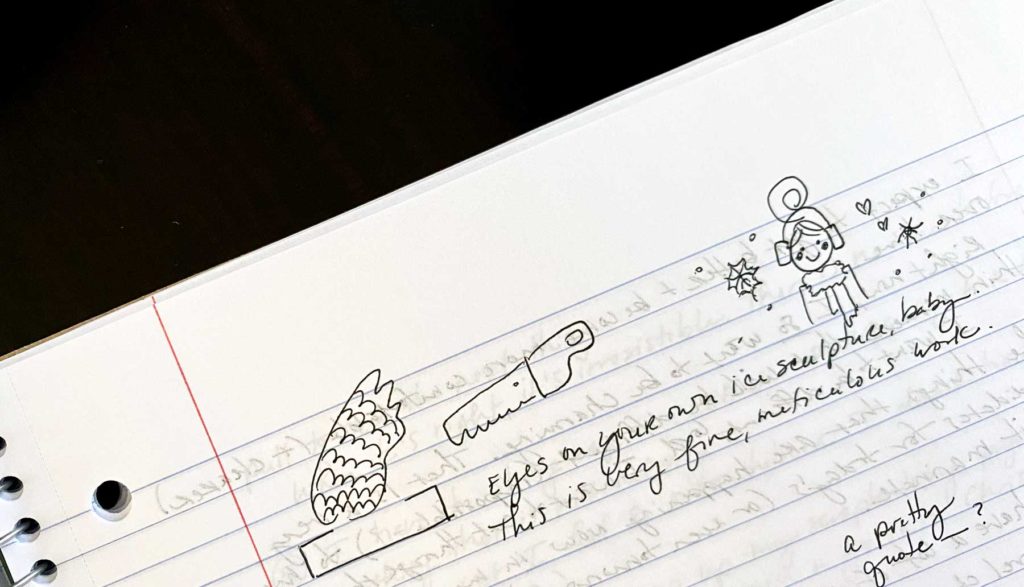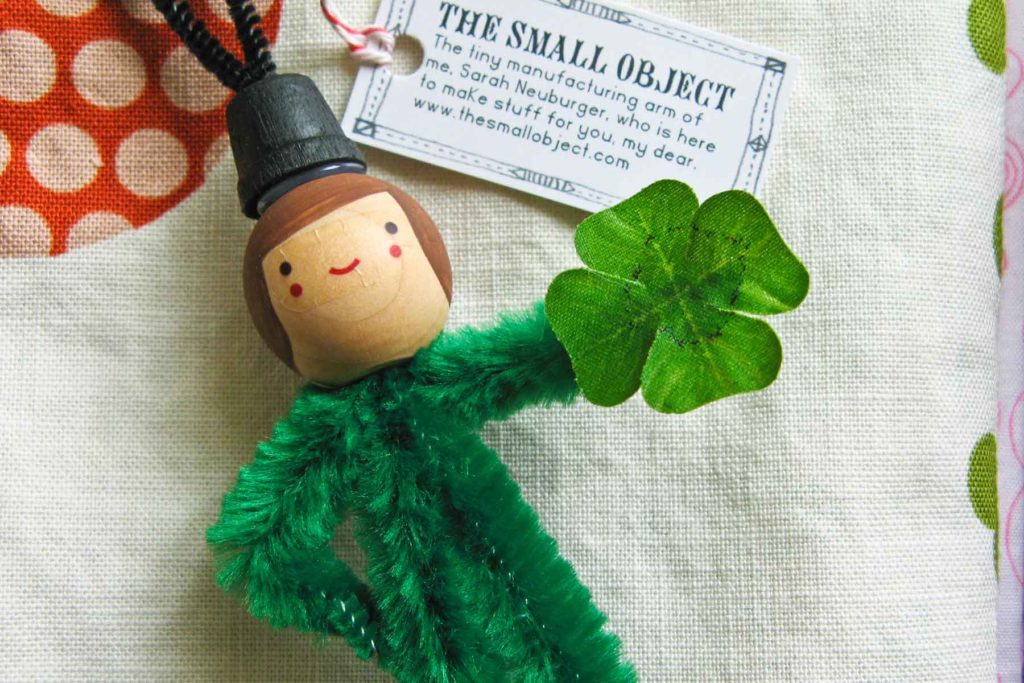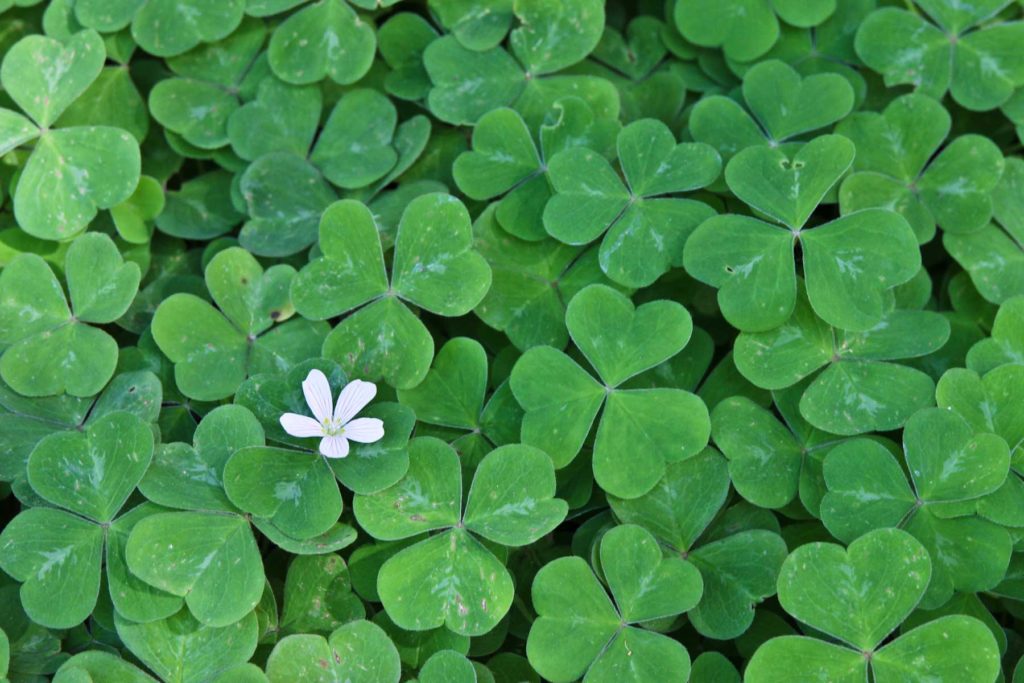Secrets of Creative Collaboration
I’m continuing my month-long series on creativity! Last week, we talked about boosting your creativity by having a private space to practice (writing with the door closed). This week, we’re talking about creating in a shared space (revising with the door open).
What do you do when it’s time to get feedback on your ideas? Let’s talk about creative collaboration!
I thought it would be fun to share visual aids of the creative process. I dug through my archives and found some old sketches I made while working with my sister on Handmade Hostess.
Our process for writing our craft book looked like this:
- We wrote an outline.
- We made a list of projects for each chapter.
- I made a TERRIBLE sketch of what the chapter would look like. I mean TERRIBLE.
- I took a picture of the sketch and sent it to her along with any fabric swatches. (We lived a few hours apart, so we each worked on our projects separately.)
- Finally, we stuffed our cars full of props, projects, and children and met somewhere in the middle. (Okay, truthfully, I didn’t put any children in my car. That was all her.) We drove a couple of hours and took pictures of everything. Photo shoot day was the first time we saw everything set up together.
Let’s talk about those terrible sketches for a moment. Somehow, when I sent her a drawing that looked like this:
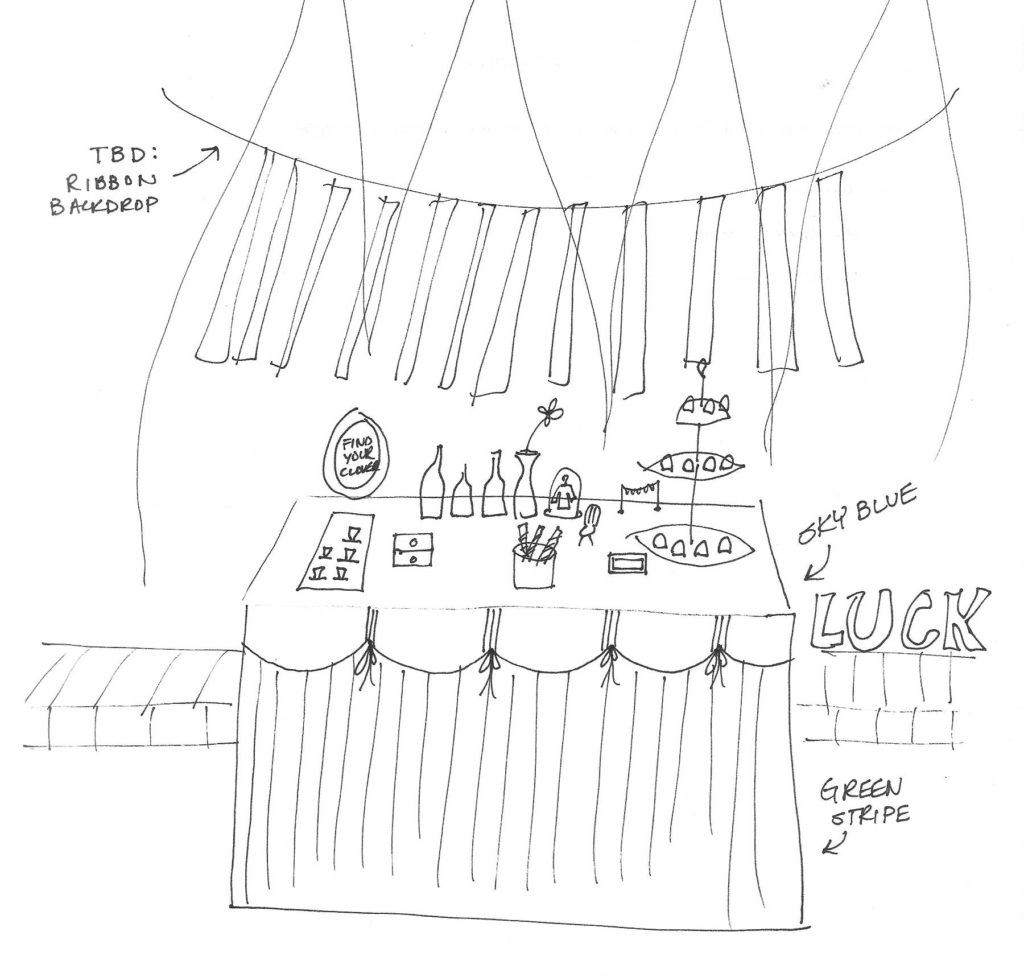
She understood that what I actually meant was this:
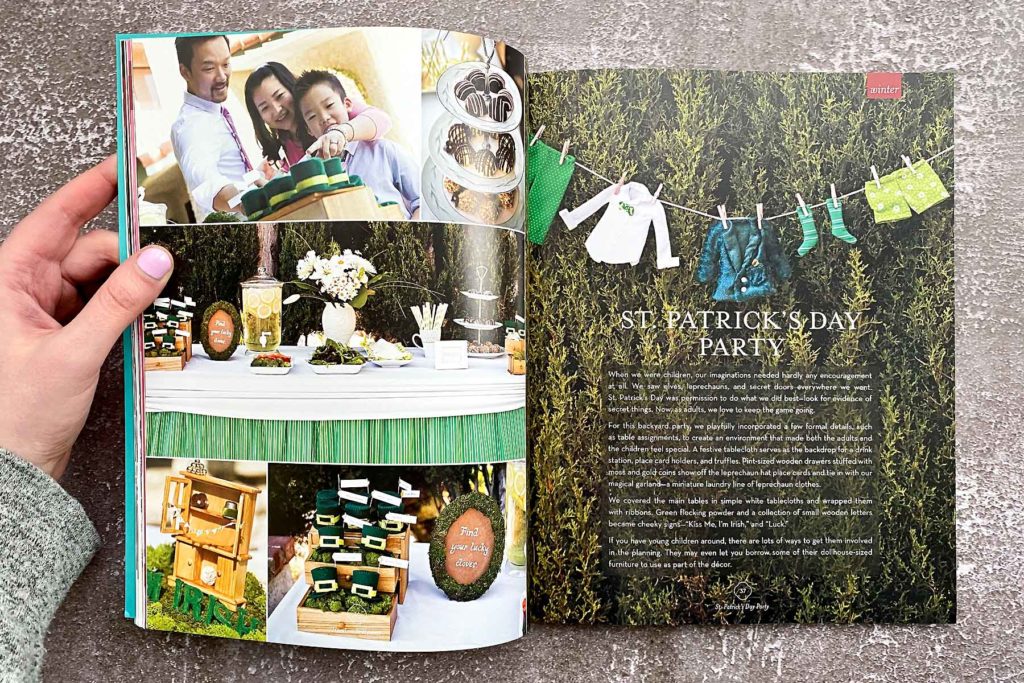
As you can see, that takes a special kind of vision.
Here’s another example:
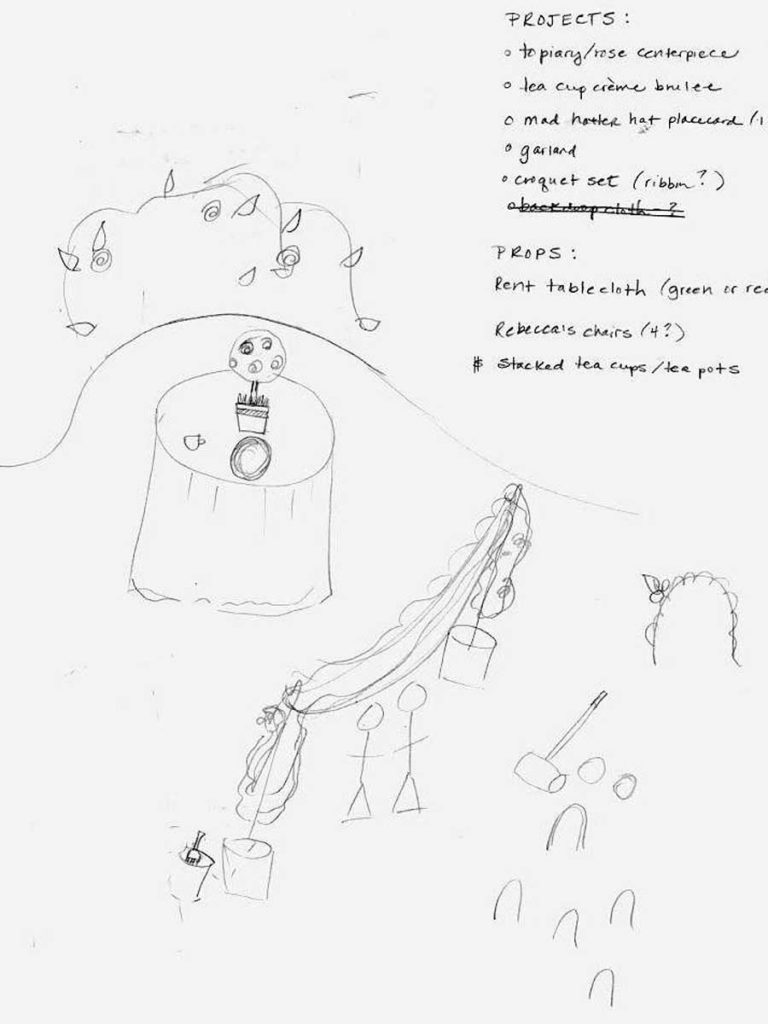
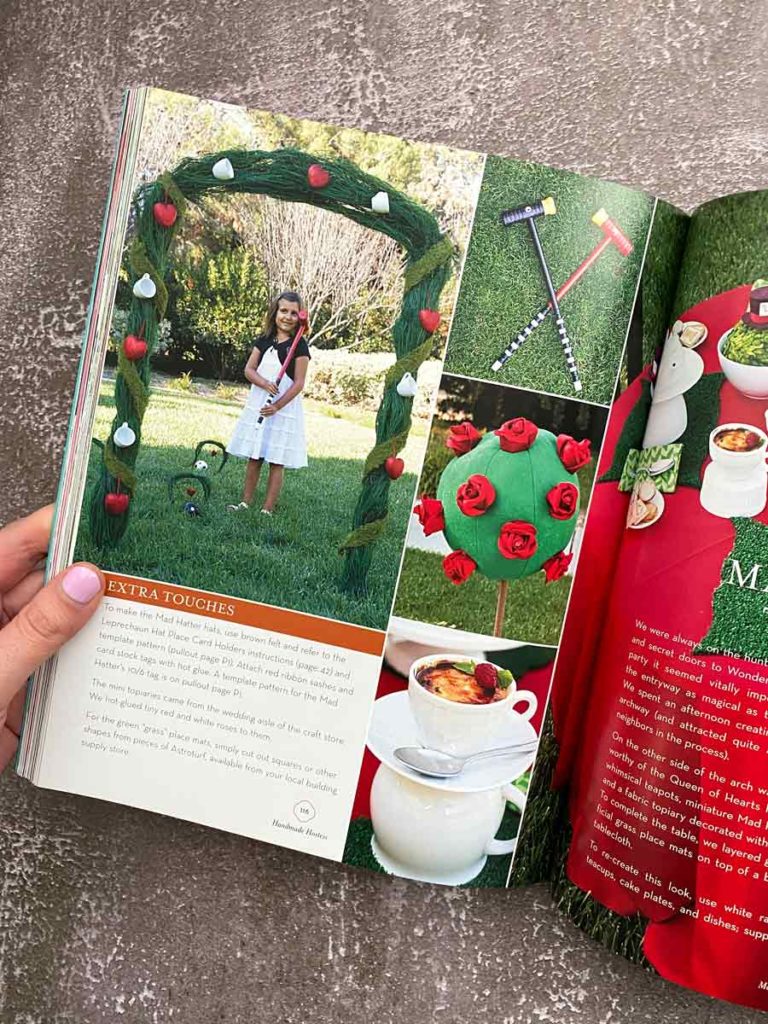
I’m not even sure what I was drawing in that picture! If I saw this sketch, I would not think, “You know what? That looks great! Let’s do it.”
When you’re working on a project, so many things can go wrong! However, as I look back at these pictures, I remember some of the things that went right. I had a fantastic brainstorming partner.
I’ve been fortunate to have several people in my life like that. I made a list of some of the qualities I most appreciate in a creative partner. (In full disclosure, I don’t have all of these qualities! However, this is the kind of friend and collaborator that I aspire to be.)
Hallmarks of a Good Creative Partnership
- A creative partner can look at something that’s very rough and imagine the possibilities. They ask questions that help the idea grow rather than shrink. They take time to understand the phases of a project. (They might help you edit your idea later, but in the beginning, they’re willing to dream big.)
- A creative partner has confidence in YOU and your creative ability. They might not like the specifics of your idea or have suggestions about how it might work better, but they believe you can work through those issues and pull off something amazing.
- A creative partner doesn’t get distracted by the potential pitfalls or things that could go wrong. They will brainstorm risks with you, but they don’t feel the need to warn you about every imaginable danger. They don’t throw water when you’re trying to kindle a fire.
- A creative partner is encouraging! After you talk with them about your idea, you are MORE excited than before. They spot ways they could help—often by contributing their own creativity, resources, or organization.
Things I’ve Learned the Hard Way
Sometimes, you end up with what I call the right person / wrong timing. I have a few friends who are really good at spotting problems. (I’m sure you have friends like that, too. We love these friends. We need them!)
However, we also want to invite their feedback at the right time. In the beginning stages of a project, too many opinions can be overwhelming. One thing I’m learning is to clearly express which phase of the project I’m in and clarify what kind of feedback would be helpful. I’ve also learned to be more honest with myself about how much input I’m ready to process.
When you find the right person at the right time, everyone benefits.
Alright, now it’s your turn! Do you have someone you love working with? What do you appreciate about this person?
P.S. If you feel discouraged or run down from too much criticism or a difficult working relationship, you might need time to recover. Even after a successful collaboration, it can be helpful to create solo for a while. (You might even want to revisit Part 2 of this series—creating in a private space.) Next time, I’ll be sharing some ideas for when you feel stuck.

